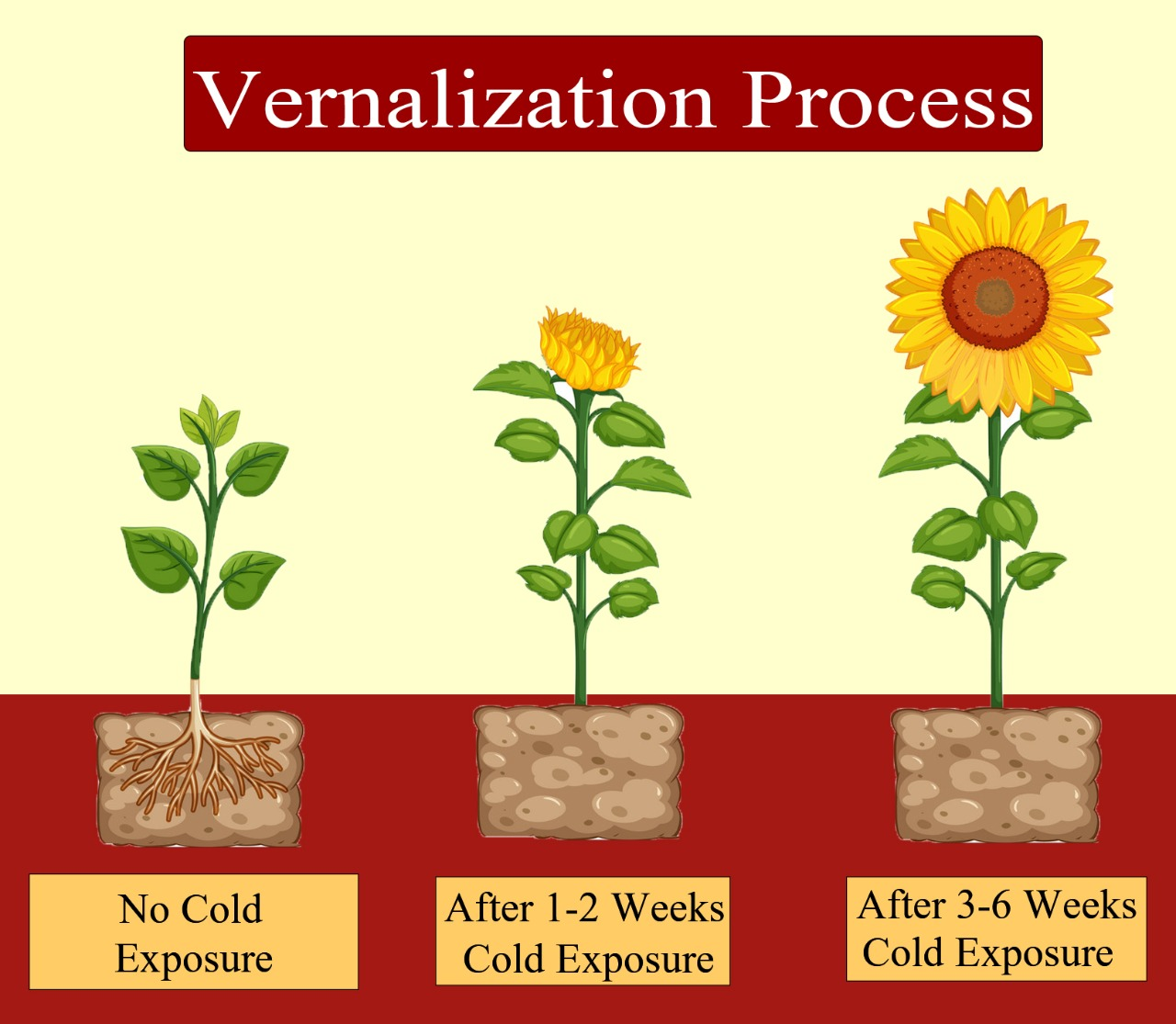
What is vernalization?
(a)Growth curve and response to live
(b)Recurrence of day and night
(c) Effect of day length on plant growth
(d) Acceleration of the ability to flower by low-temperature treatment
Answer
582.3k+ views
Hint: This is the process that allows the plants to grow in regions (cold regions), where they do not grow normally. It Induces early flowering and reduces the vegetative phase of plants.
Complete answer:
The process of induction of flowers due to prolonged exposure to cold temperature is known as vernalization. It is the acceleration of the ability to flower by low -temperature treatment. It is a kind of adaptation shown by the plants which are exposed to extreme or harsh winter weather followed by short growing seasons. It increases yield in plants.

Additional Information: It can be practiced artificially too. The artificial method of vernalization was discovered by a Russian worker Lysenko in 1928. He found that the cold or low temperature requiring annual and biennial plants can be forced or made to flower in one growing season by supplying low-temperature treatment to young plants or moistened seeds. To the effect of this chilling treatment, he called it vernalization.
So.the correct answer is, ’acceleration of the ability to flower by low-temperature treatment’.
Note: -Gibberellin (GA) is the main plant hormone that is involved in regulating the development of the plants. The site that perceives the cold stimulus can be different in different plants. It could be the apical meristem in the shoots, the germinating seed, or the vegetative parts such as leaves.
-Under long-day conditions vernalin hormone turns into gibberellin, this was reported by Chailakhyan in the year 1968. Thus it was found that in some plants the requirement for vernalization is overcome by gibberellins.
Complete answer:
The process of induction of flowers due to prolonged exposure to cold temperature is known as vernalization. It is the acceleration of the ability to flower by low -temperature treatment. It is a kind of adaptation shown by the plants which are exposed to extreme or harsh winter weather followed by short growing seasons. It increases yield in plants.

Additional Information: It can be practiced artificially too. The artificial method of vernalization was discovered by a Russian worker Lysenko in 1928. He found that the cold or low temperature requiring annual and biennial plants can be forced or made to flower in one growing season by supplying low-temperature treatment to young plants or moistened seeds. To the effect of this chilling treatment, he called it vernalization.
So.the correct answer is, ’acceleration of the ability to flower by low-temperature treatment’.
Note: -Gibberellin (GA) is the main plant hormone that is involved in regulating the development of the plants. The site that perceives the cold stimulus can be different in different plants. It could be the apical meristem in the shoots, the germinating seed, or the vegetative parts such as leaves.
-Under long-day conditions vernalin hormone turns into gibberellin, this was reported by Chailakhyan in the year 1968. Thus it was found that in some plants the requirement for vernalization is overcome by gibberellins.
Recently Updated Pages
Why are manures considered better than fertilizers class 11 biology CBSE

Find the coordinates of the midpoint of the line segment class 11 maths CBSE

Distinguish between static friction limiting friction class 11 physics CBSE

The Chairman of the constituent Assembly was A Jawaharlal class 11 social science CBSE

The first National Commission on Labour NCL submitted class 11 social science CBSE

Number of all subshell of n + l 7 is A 4 B 5 C 6 D class 11 chemistry CBSE

Trending doubts
Differentiate between an exothermic and an endothermic class 11 chemistry CBSE

10 examples of friction in our daily life

One Metric ton is equal to kg A 10000 B 1000 C 100 class 11 physics CBSE

Difference Between Prokaryotic Cells and Eukaryotic Cells

1 Quintal is equal to a 110 kg b 10 kg c 100kg d 1000 class 11 physics CBSE

State the laws of reflection of light




